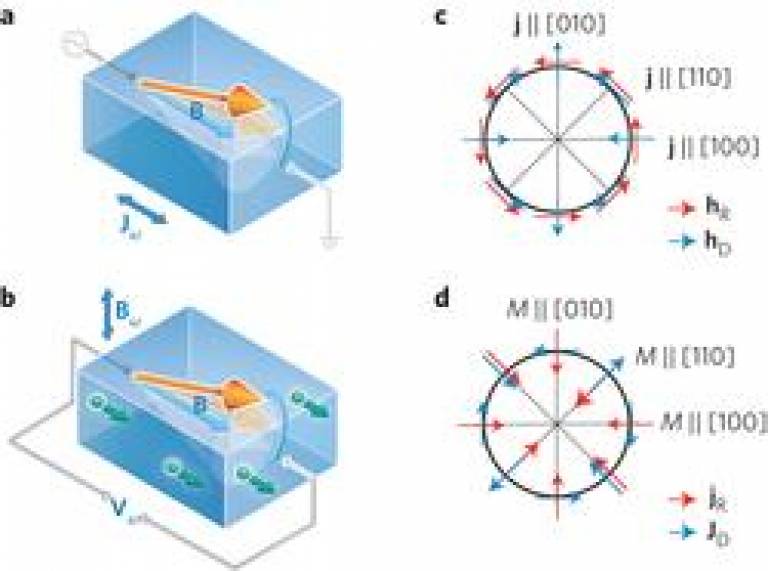Magnonic charge pumping via spin-orbit coupling
21 April 2015
C.
 Ciccarelli, K. M. D. Hals, A. Irvine, V. Novak, Y. Tserkovnyak, H. Kurebayashi, A. Brataas, & A. J. Ferguson Nature Nanotechnology 10, 50-54 (2015)
Ciccarelli, K. M. D. Hals, A. Irvine, V. Novak, Y. Tserkovnyak, H. Kurebayashi, A. Brataas, & A. J. Ferguson Nature Nanotechnology 10, 50-54 (2015)
doi:10.1038/nnano.2014.252 | Download PDF
The interplay between spin, charge and orbital degrees of freedom has led to the development of spintronic devices such as spin-torque oscillators and spin-transfer torque magnetic random-access memories. In this development, spin pumping represents a convenient way to electrically detect magnetization dynamics1, 2, 3, 4, 5, 6. The effect originates from direct conversion of low-energy quantized spin waves in the magnet, known as magnons, into a flow of spins from the precessing magnet to adjacent leads. In this case, a secondary spin-charge conversion element, such as heavy metals with large spin Hall angle4, 5, 6 or multilayer layouts7, is required to convert the spin current into a charge signal. Here, we report the experimental observation of charge pumping in which a precessing ferromagnet pumps a charge current, demonstrating direct conversion of magnons into high-frequency currents via the relativistic spin-orbit interaction. The generated electric current, unlike spin currents generated by spin-pumping, can be directly detected without the need of any additional spin-charge conversion mechanism. The charge-pumping phenomenon is generic and gives a deeper understanding of its reciprocal effect, the spin orbit torque, which is currently attracting interest for their potential in manipulating magnetic information.
 Close
Close

